RARE! WWII 1944 Lt. Gen. George Patton’s Third Army "SARRE RIVER & MERZIG " Siegfried Line U.S. Soldier Combat Assault Map
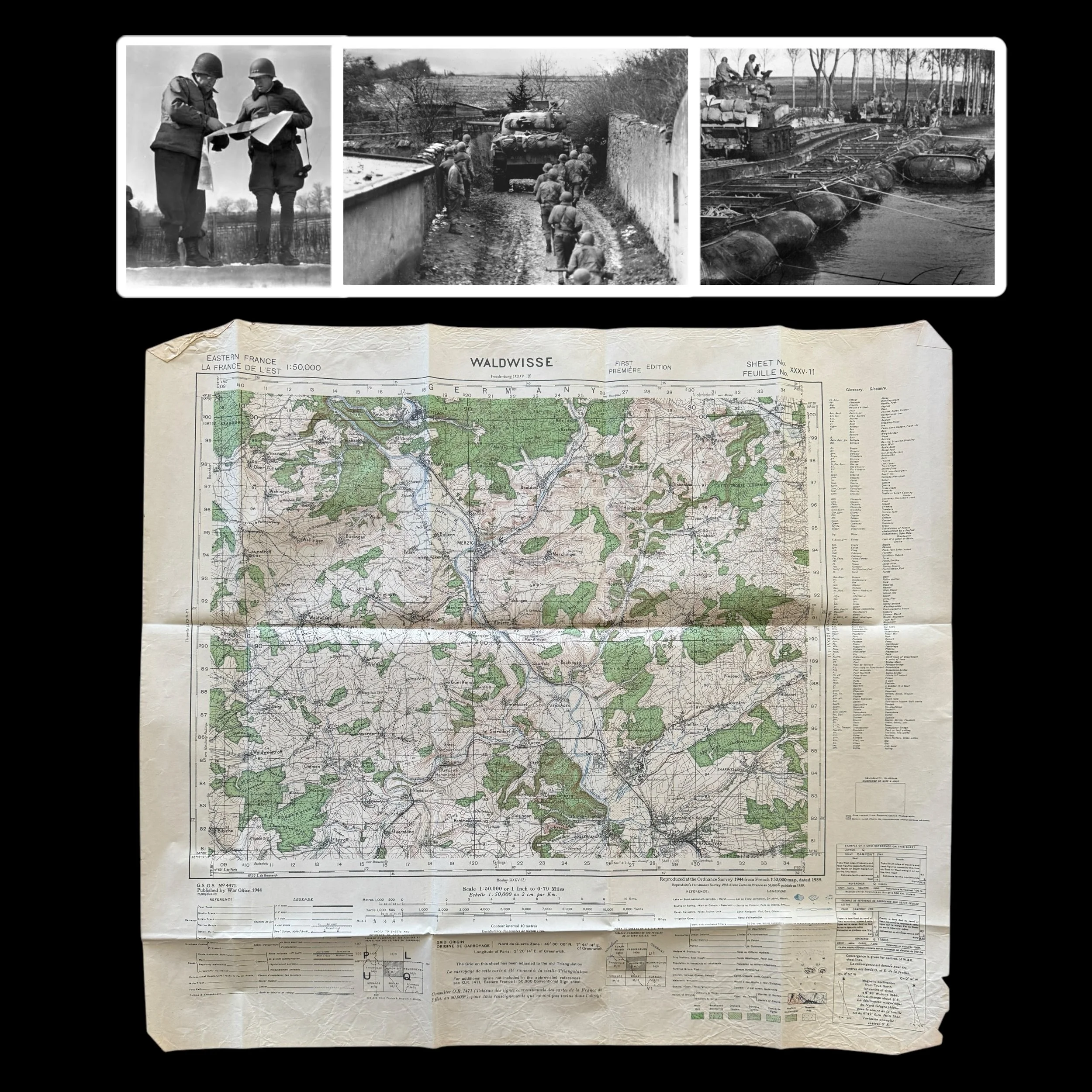

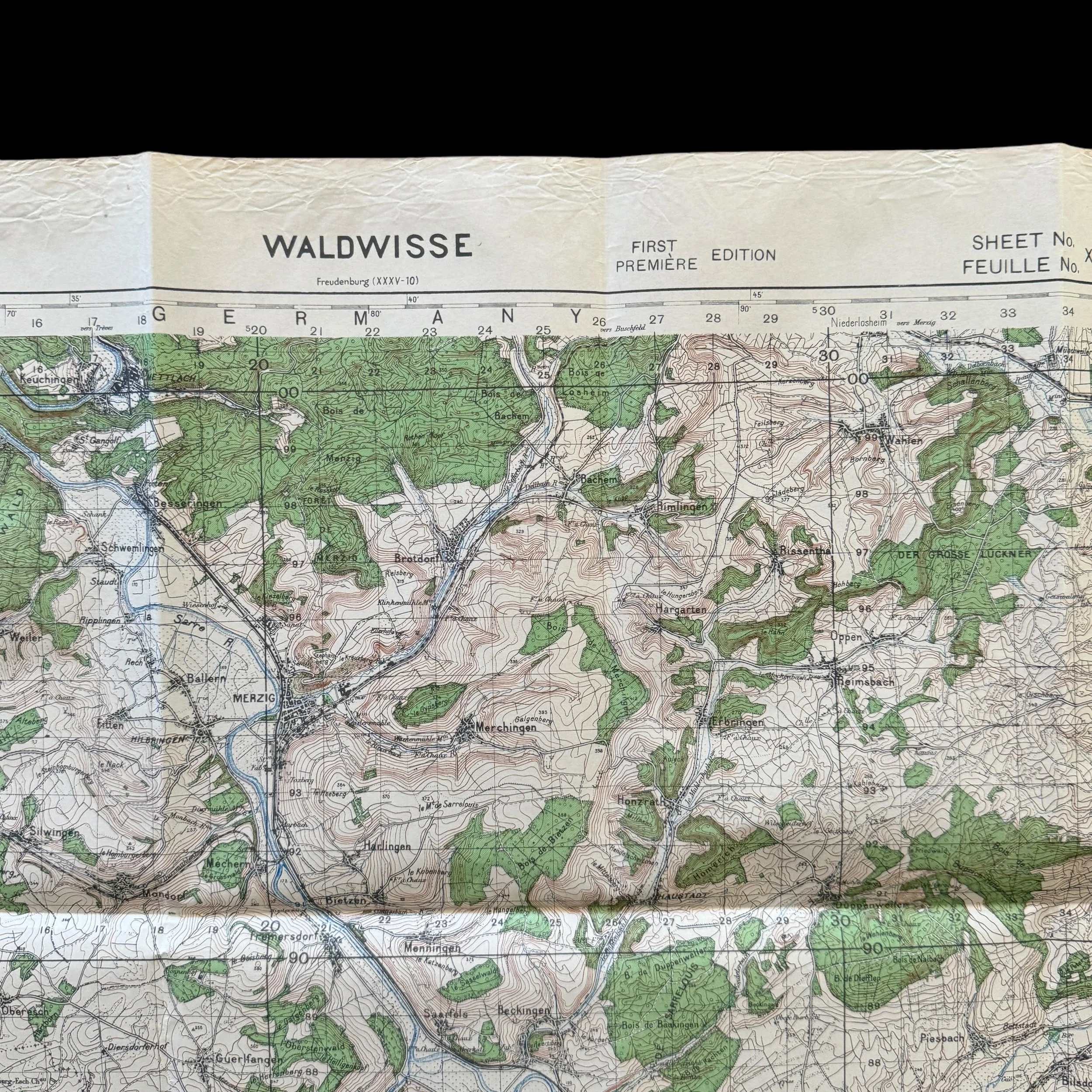
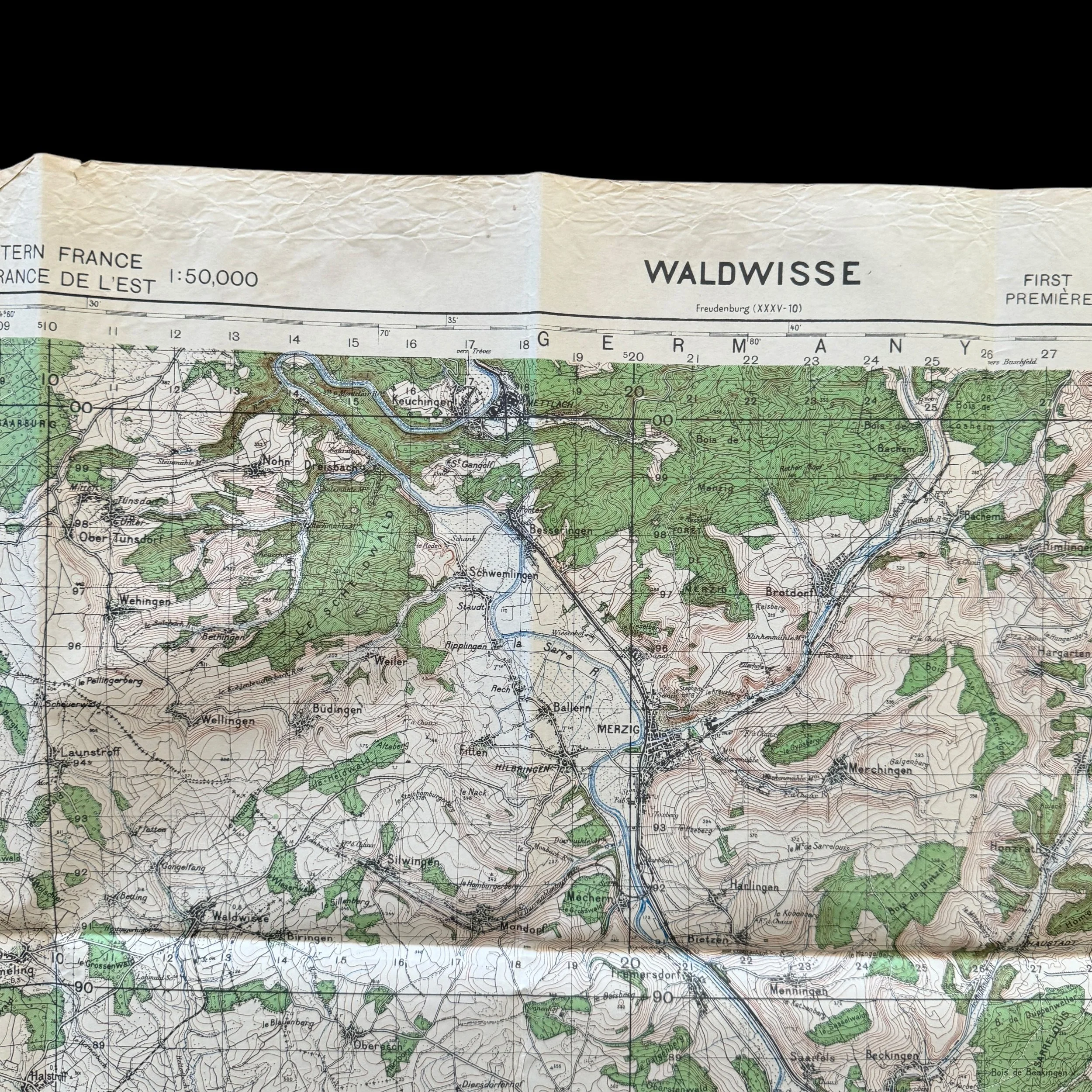
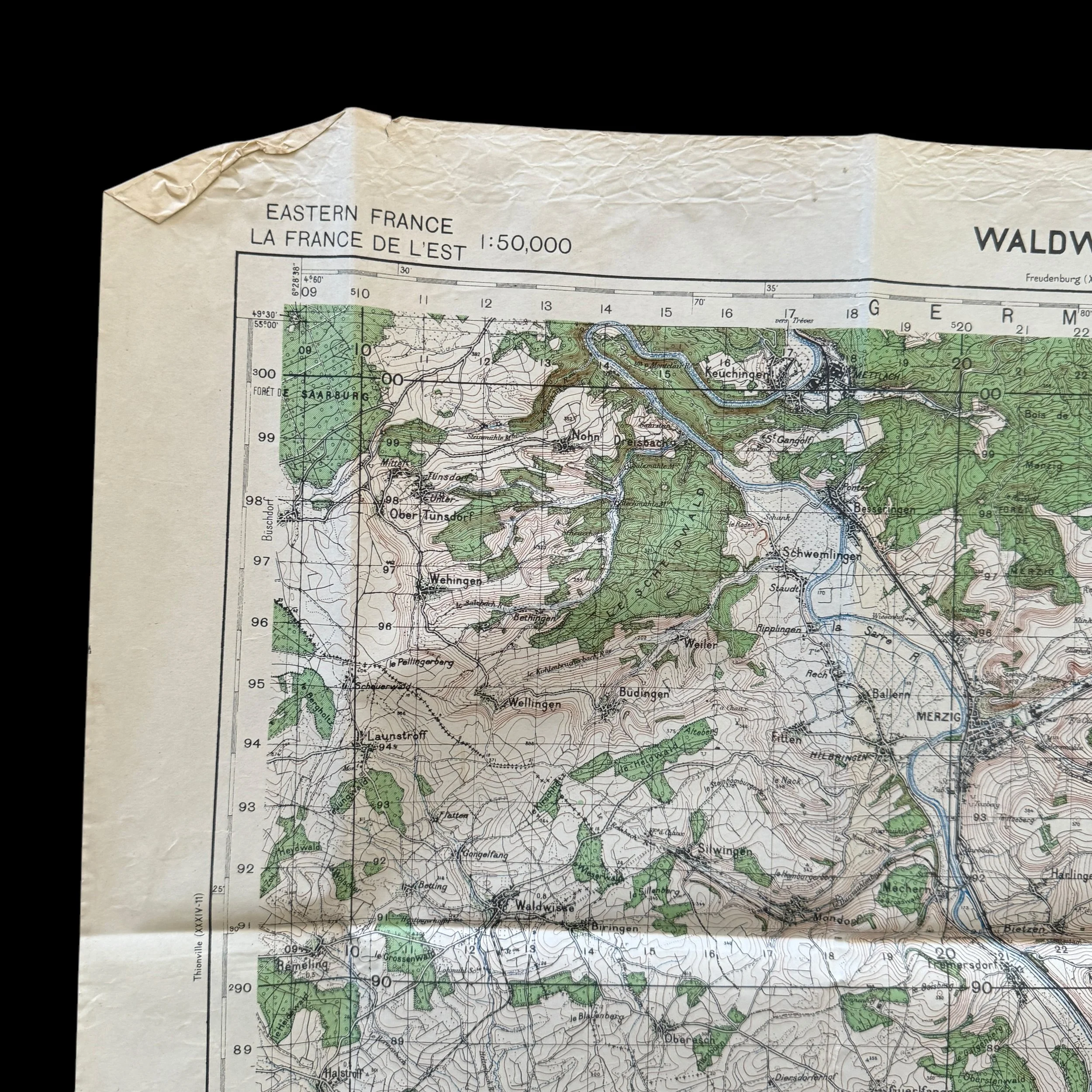
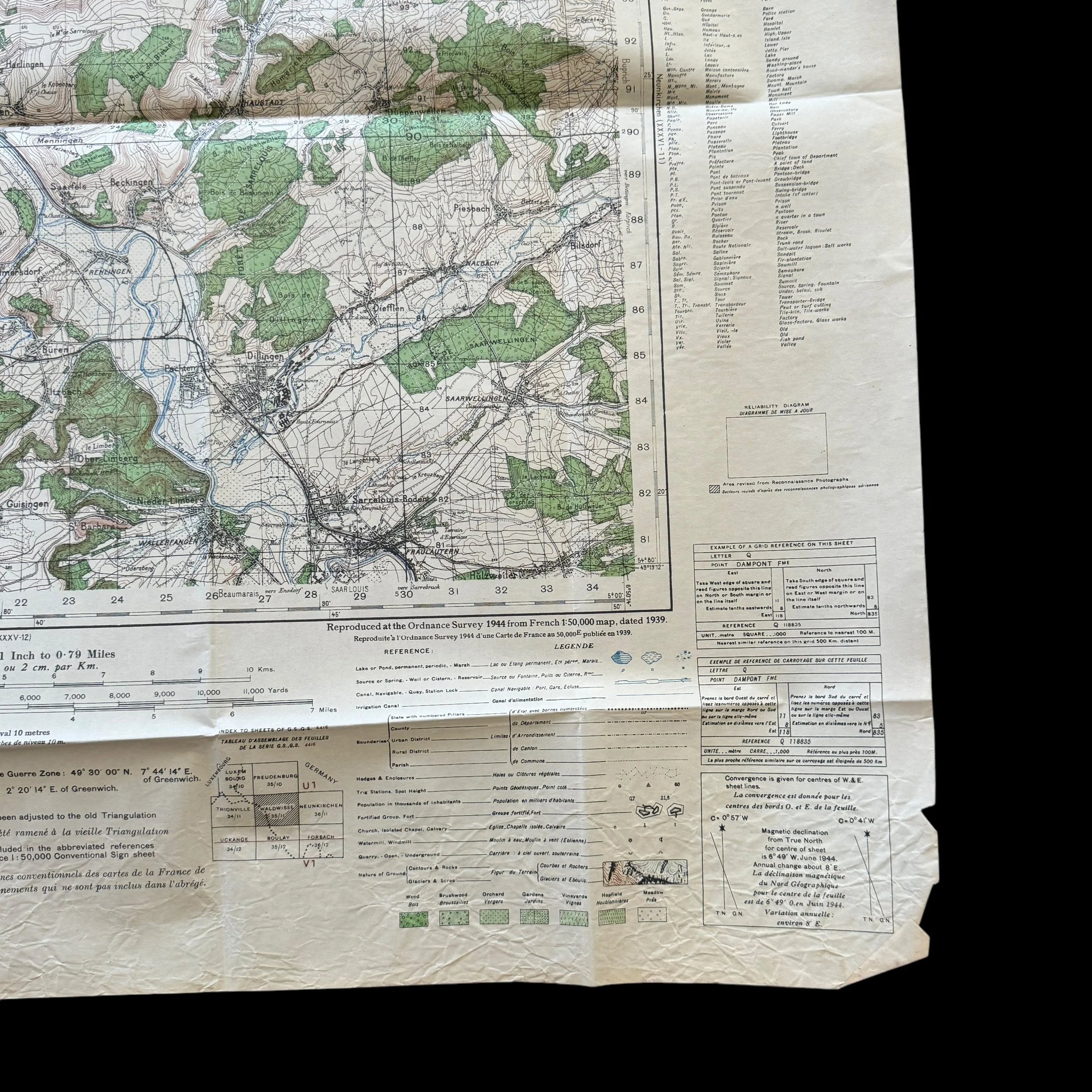
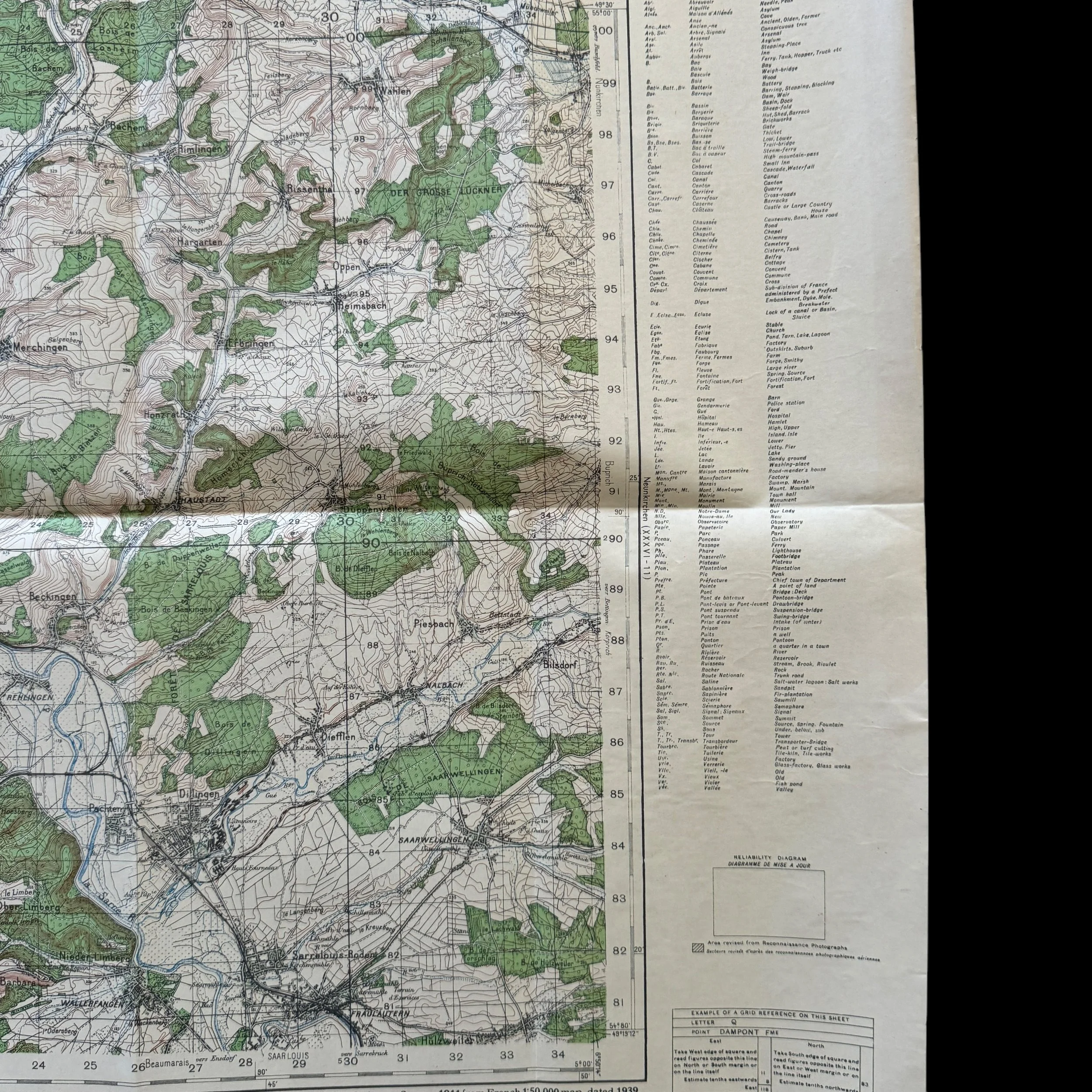
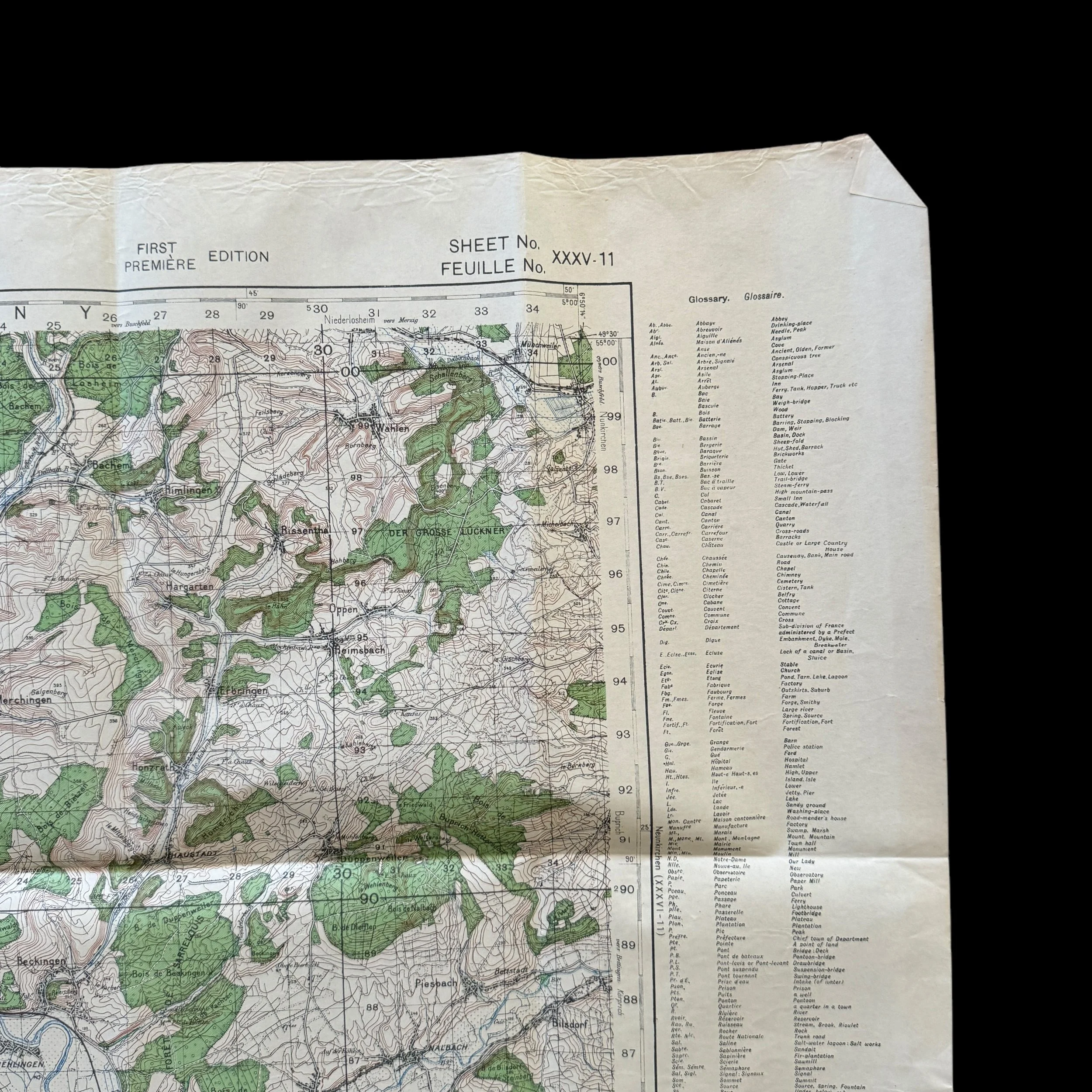
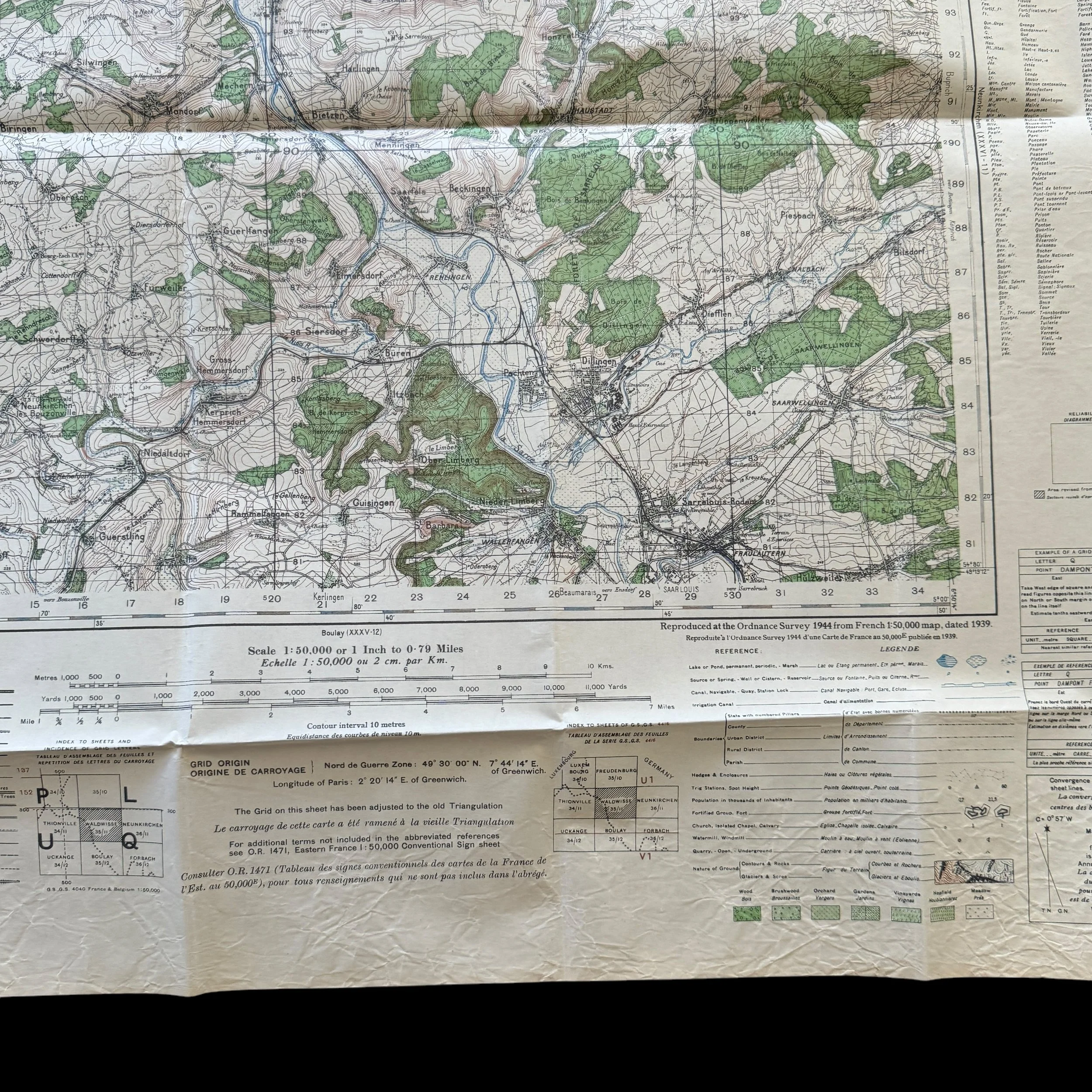
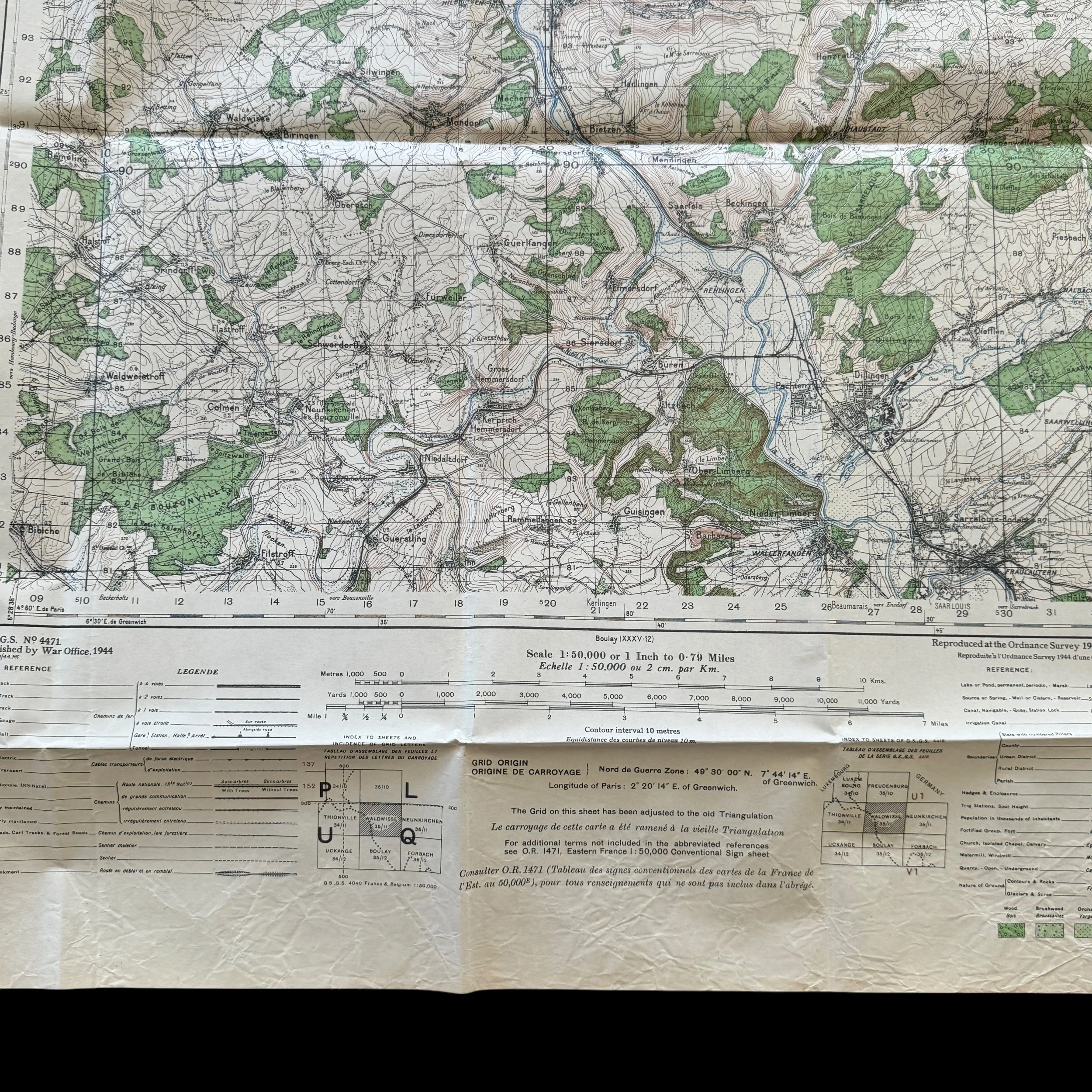
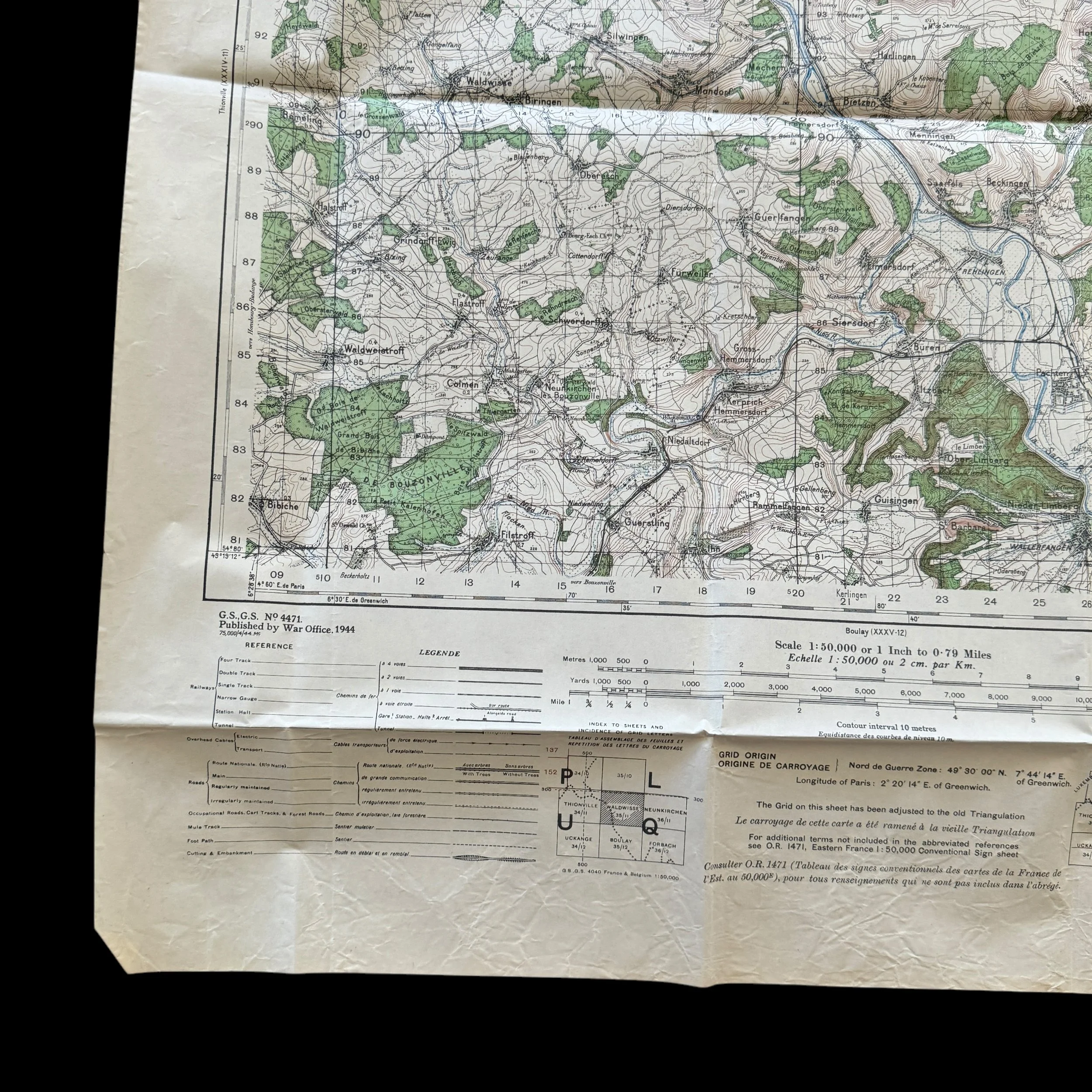
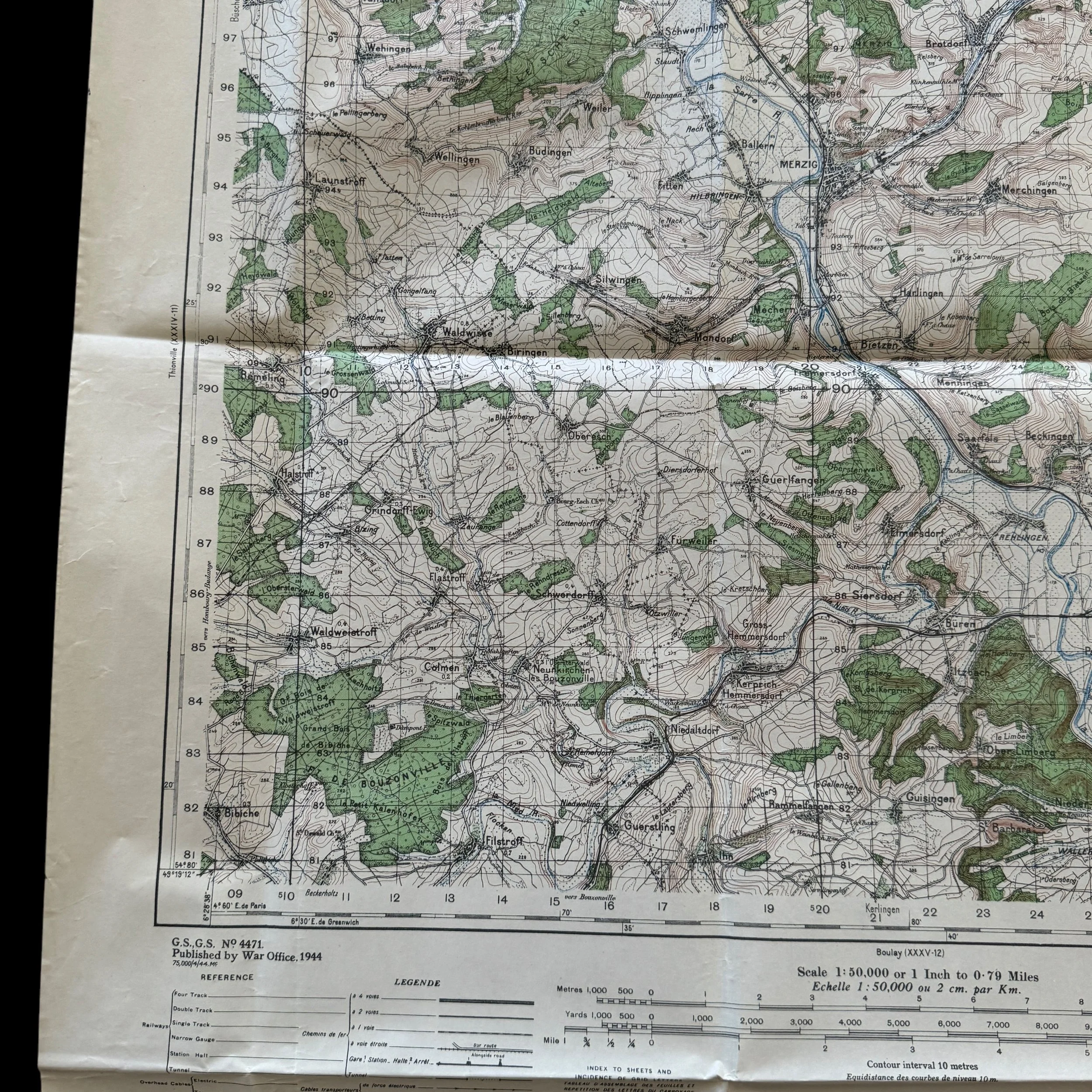
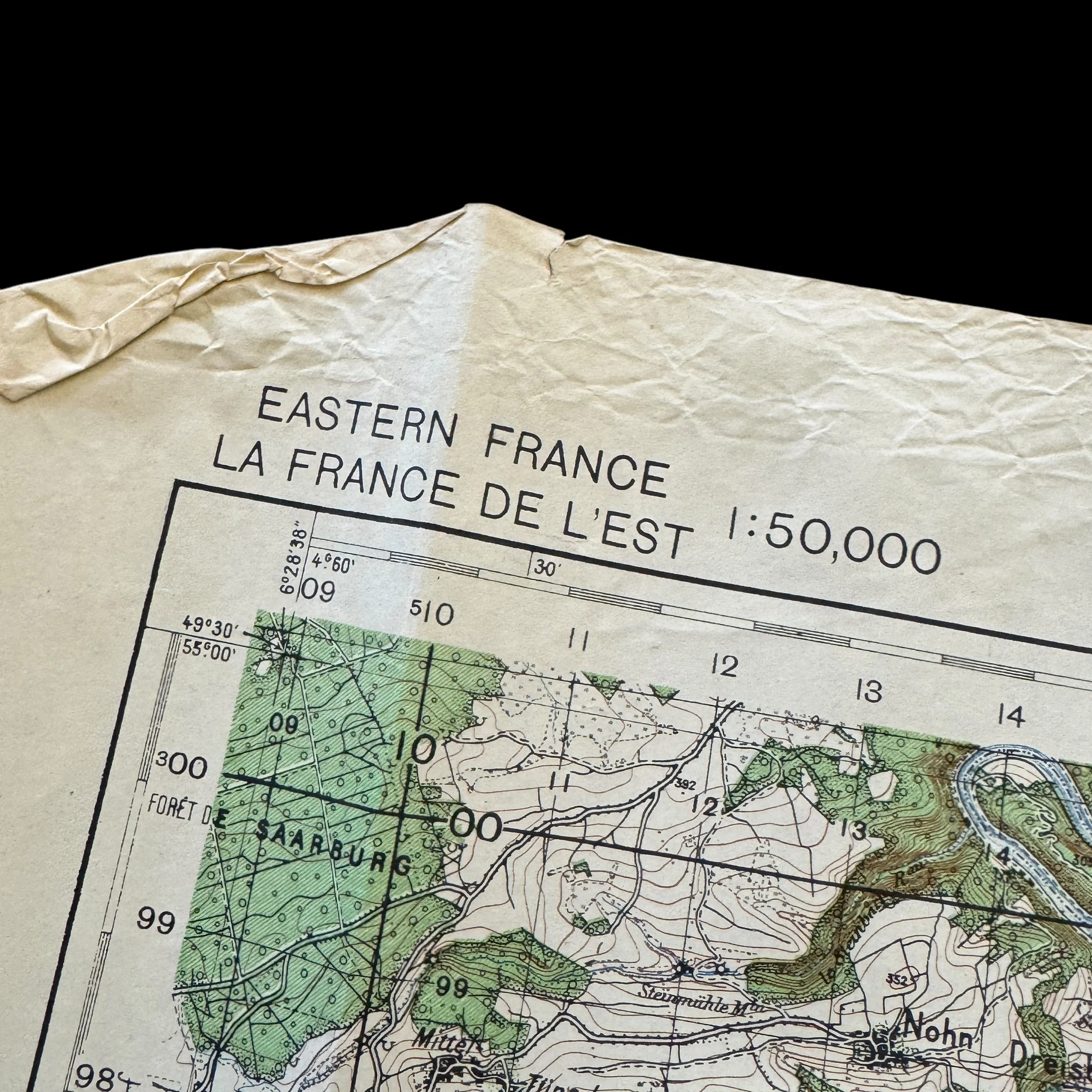
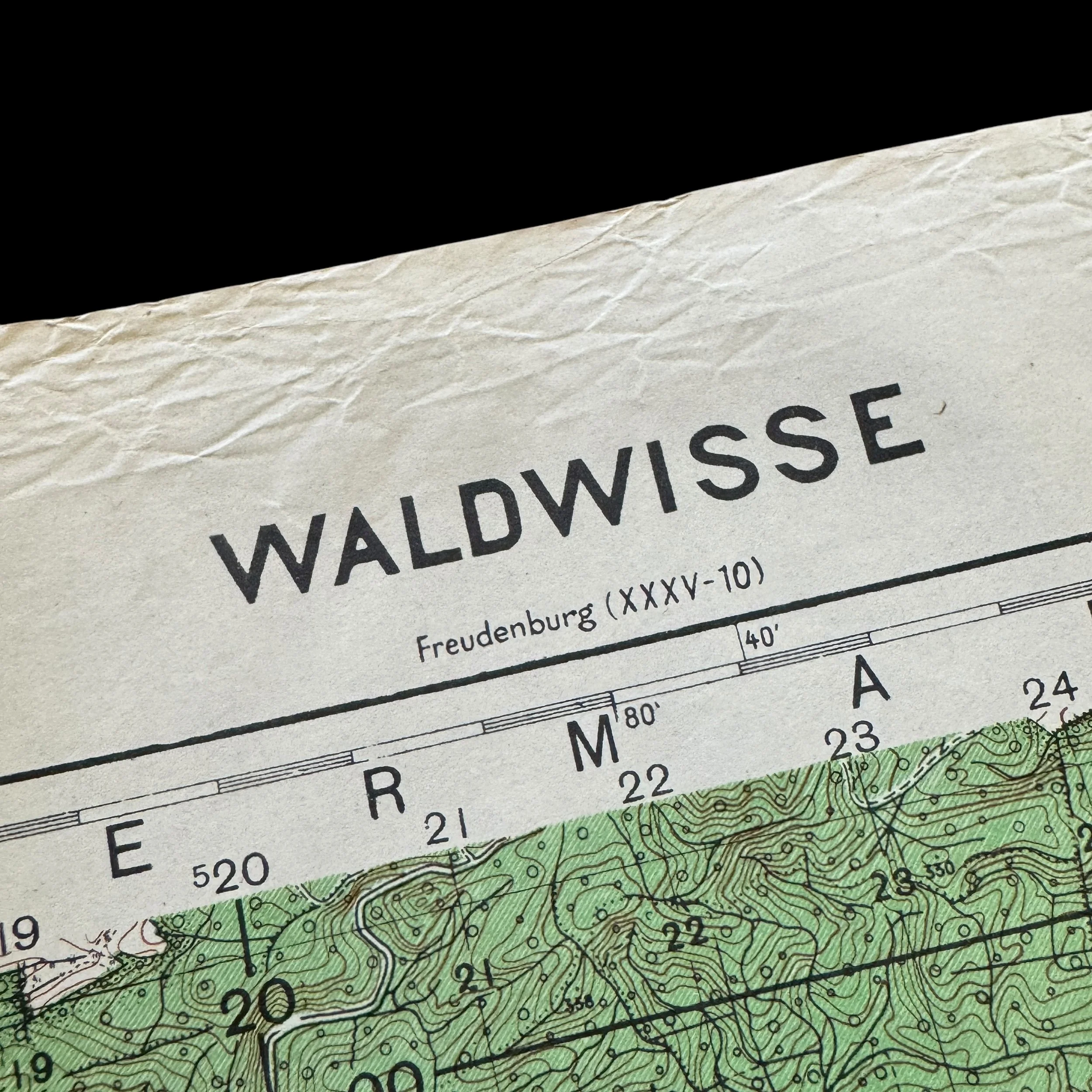
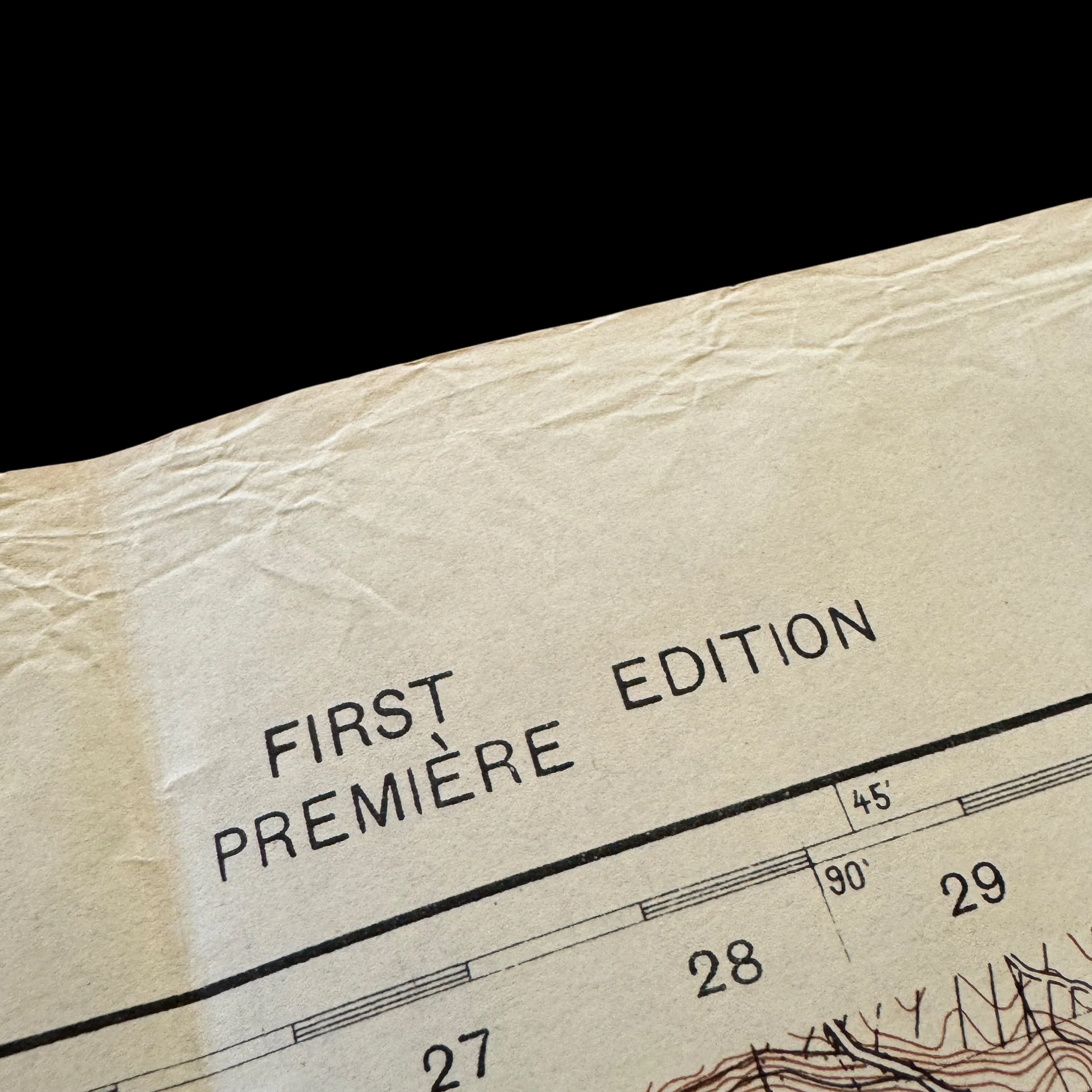
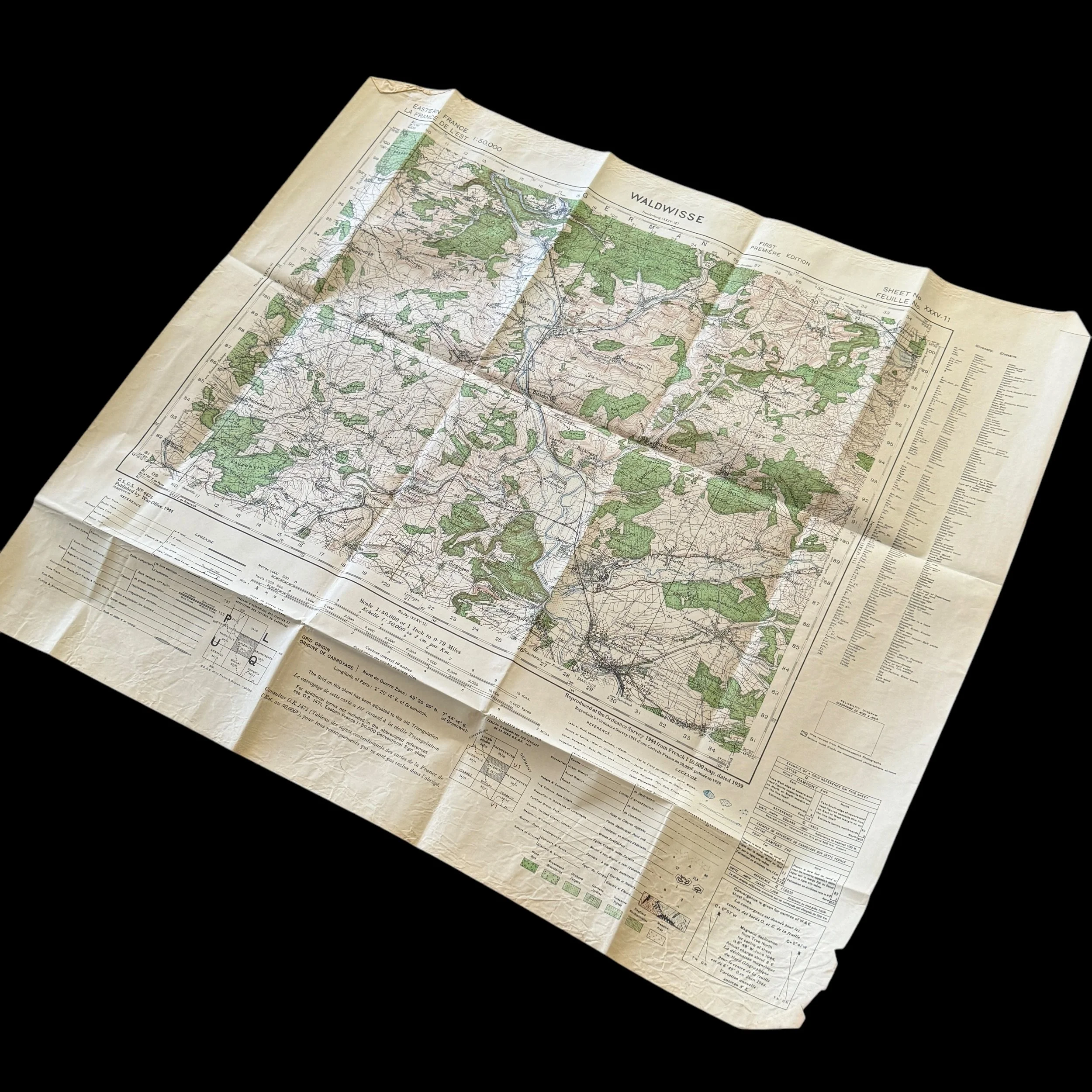



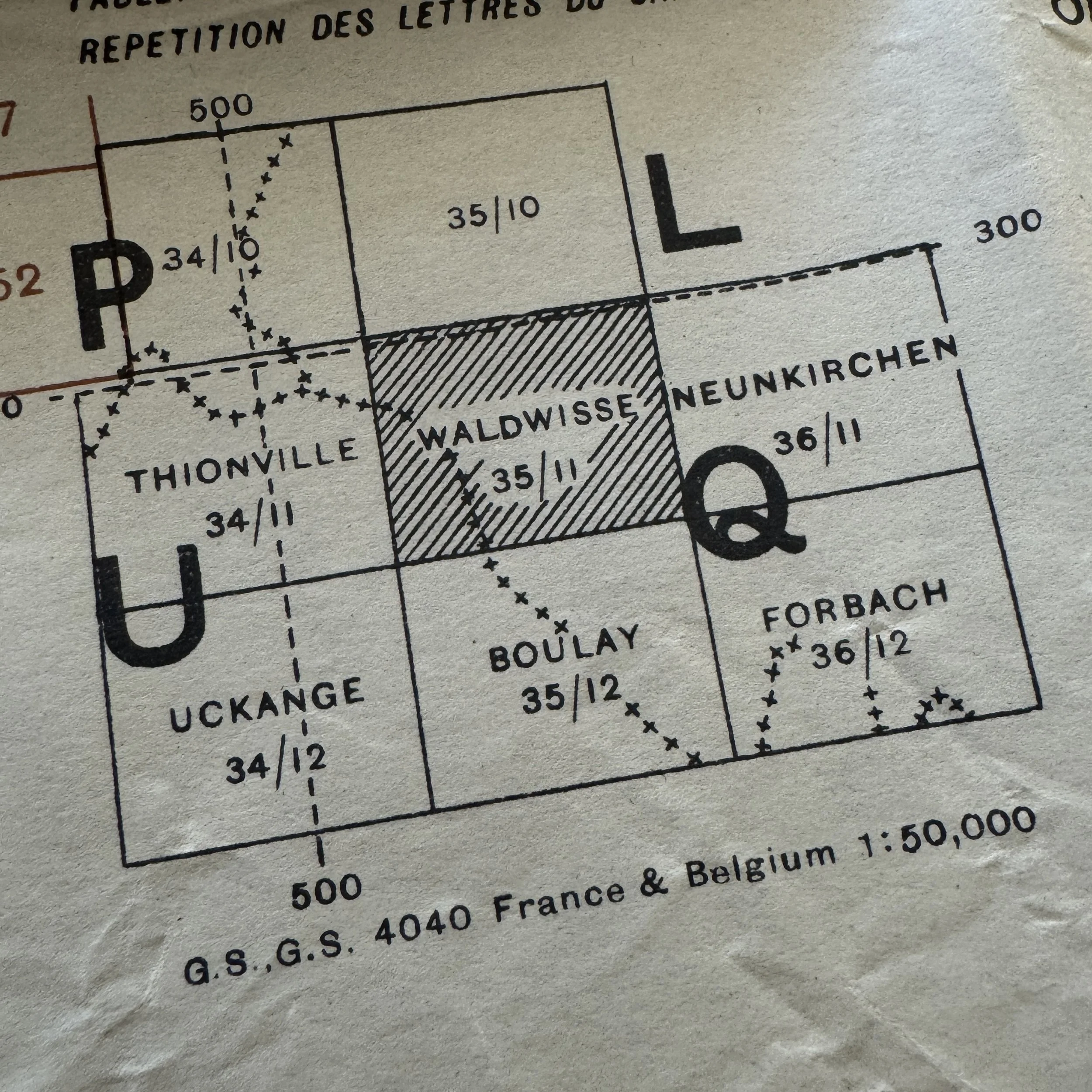
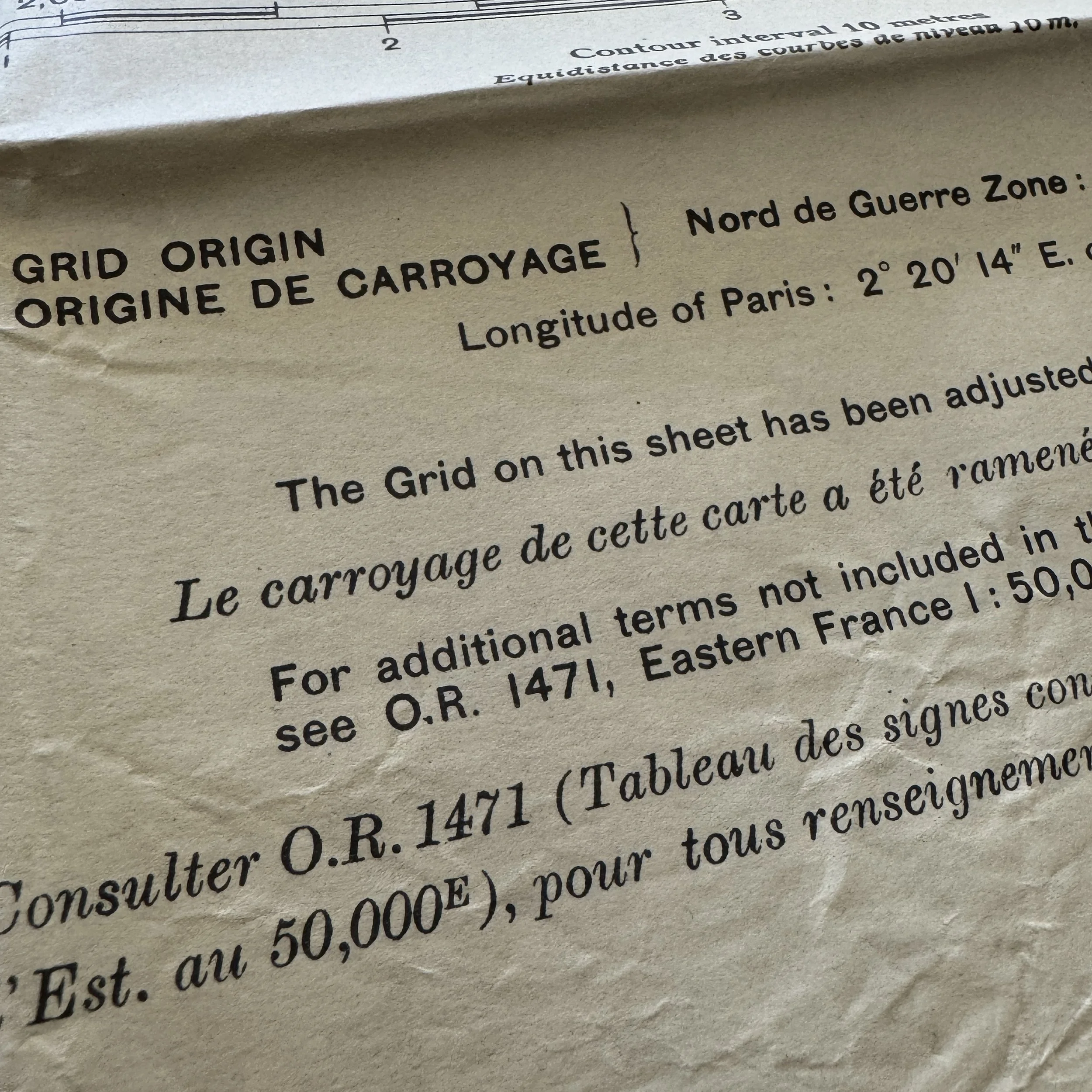

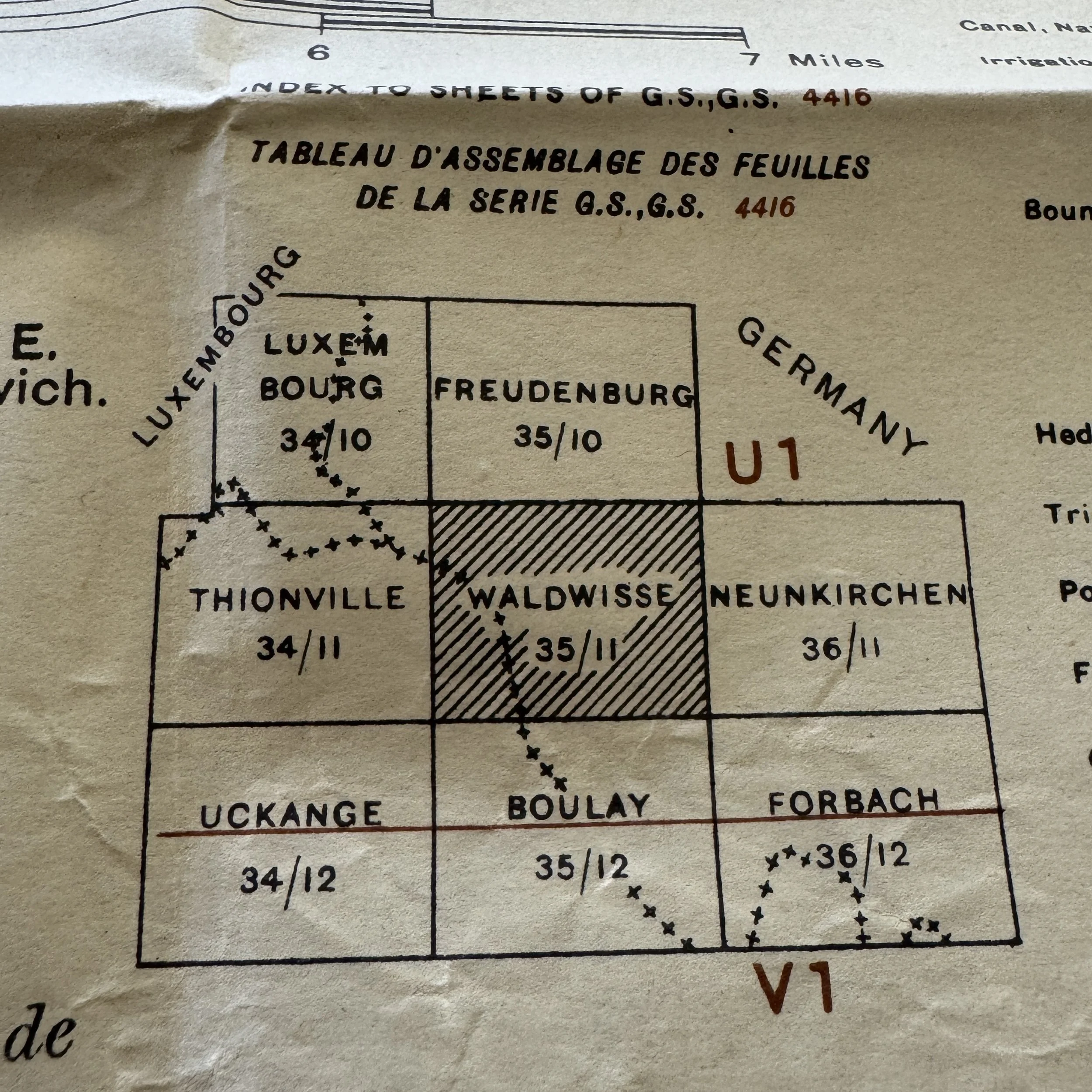


RARE! WWII 1944 Lt. Gen. George Patton’s Third Army "SARRE RIVER & MERZIG " Siegfried Line U.S. Soldier Combat Assault Map
Comes with a hand-signed C.O.A
Size: 25.5 × 28 inches
Dated: 1944
Featues: SARRE RIVER & MERZIG
This exceptional and historically significant World War II combat map—titled“Waldwisse”—is a rare surviving example of an operational battlefield document used by Lieutenant General George S. Patton’s U.S. Third Army during the Lorraine Campaign in late 1944. This map played a direct role in the planning and execution of the American assault against the Siegfried Line, Nazi Germany’s last major defensive barrier along its western frontier.
As Allied forces surged eastward following the liberation of France, Patton’s Third Army was tasked with one of the most formidable objectives of the war: breaching the Siegfried Line(known to the Germans as the Westwall), a nearly 400-mile-long network of concrete bunkers, anti-tank defenses, minefields, and barbed wire entanglements stretching from the Netherlands to Switzerland. It had been conceived by Hitler in the 1930s as an impenetrable wall of defense. However, by late 1944, it was no longer just a line on a map—it had become the last shield protecting the German homeland.
This“Waldwisse” combat assault map captures a key moment in that operation. The map was created specifically to support infantry and armored divisions as they approached and crossed the Saar River, near the town of Merzig, a strategic point along the Franco-German border. The region had been transformed into a death trap by German engineers, with dense bunker networks, mortar nests, machine gun emplacements, artillery positions, and the now-infamous “dragon’s teeth”—rows of pyramid-shaped anti-tank obstacles embedded in the earth.
The Lorraine Campaign, particularly the assault on this sector of the Siegfried Line, would prove to be one of the most grueling and costly American operations of the European Theater. Fierce German resistance, harsh terrain, mud-choked roads, and freezing late-autumn weather made every inch of forward movement a deadly challenge. Patton’s forces, often operating with stretched supply lines and minimal rest, pressed forward with relentless intensity.
One of the pivotal reasons for the success of this assault was Patton’s leadership style. Known for his audacious, fast-moving tactics, Patton believed in the element of surprise, and he frequently relied on speed, mobility, and unorthodox strategies to out maneuver entrenched enemy positions. In the assault on the Siegfried Line, Patton leveraged massed armored spearheads supported by concentrated infantry and artillery strikes, aiming to exploit weak points in the German defense and overwhelm them before they could regroup.
The use of armored units at the front of the attack proved essential. Infantry alone could not breach the fortified bunkers, but the combination of Sherman tanks, tank destroyers, and mobile artillery enabled the Americans to break through these formidable barriers. Once breached, Allied forces poured into German territory, effectively nullifying what Hitler had once boasted to be an impenetrable fortress.
This battle also marked one of the first large-scale crossings of the Saar River, a symbolic and strategic milestone that represented the transition from liberation to invasion. With the Siegfried Line breached, the road to theheart of Germany was now open. The psychological blow to the German military and its leadership was significant; the last line of defense had been pierced.
The“Waldwisse” map itself is a powerful piece of history—a frontline planning document that directly supported one of the most consequential offensives of the war. Its markings, layout, and topographical data would have guided the hands of officers and strategists as they coordinated the timing and direction of the assault. As such, it is not only an artifact of war but a witness to history—used at the very edge of Hitler’s crumbling empire.
Today, this combat map stands as a testament to the courage, ingenuity, and sacrifice of the soldiers of Patton’s Third Army. Their victory at the Siegfried Line was not merely tactical; it marked a turning point in the Allied campaign to end the war in Europe. The breaching of the line helped accelerate the downfall of the Third Reich, leading eventually to the encirclement of the Ruhr, the liberation of concentration camps, and the final collapse of Nazi Germany.
Artifacts like this remind us of the complexity and cost of freedom. Preserved in museum-grade condition, this map is an extraordinary relic from one of the most pivotal moments in modern history—an authentic piece of the fight to liberate Europe and restore peace to the world.